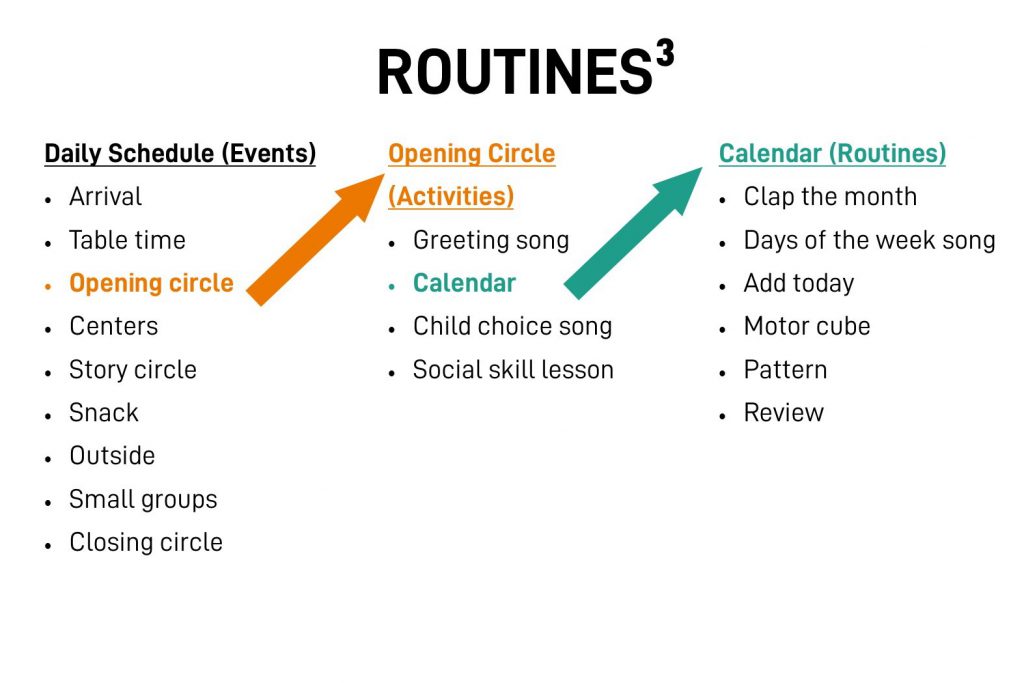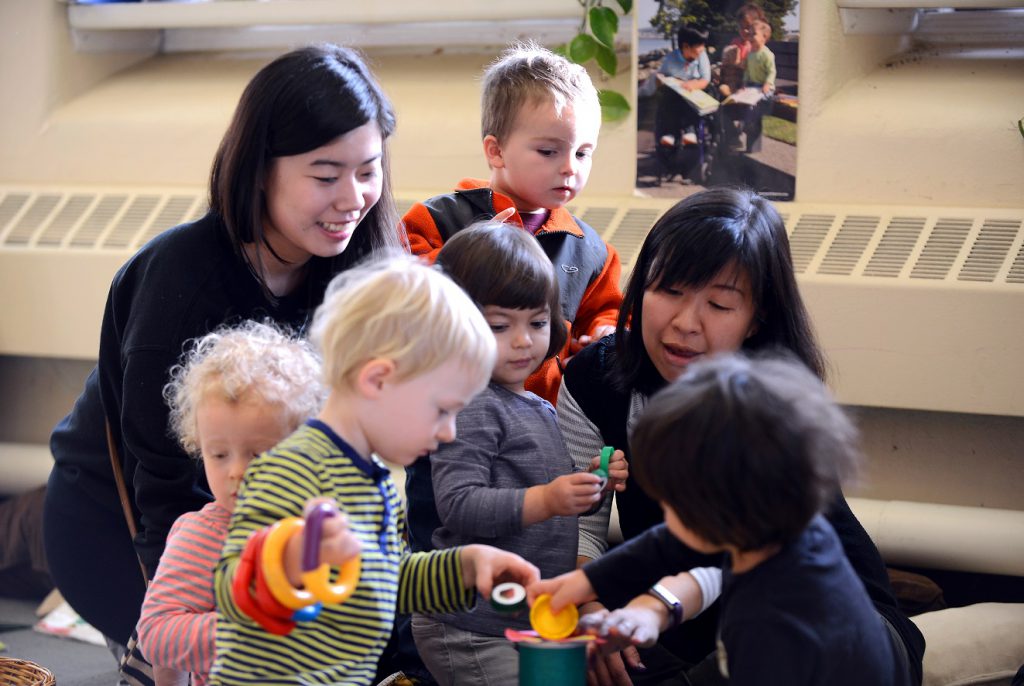Embedding Instruction in Your Daily Schedule
It’s officially fall, but we still have more great content to share from the 2019 Minnesota Early Intervention Summer Institute! This last post in our series recapping the Summer Institute comes to us courtesy of volunteer Betsy Rust, SLP, CCC, ECSE Professional Development Facilitator with the MN Centers of Excellence for Young Children with Disabilities.
“The Pyramid, Classroom Engagement, and Beyond! Maximizing Instruction Using Embedded, Naturalistic, and Peer-Mediated Strategies to Meet Children’s Individual Goals in Inclusive Settings” was the full title of this session, taught by Ted Bovey, Associate Director of the Positive Early Learning Experiences Center at the University of Denver.
Bovey led participants through an intense dig into the Pyramid Model of classroom engagement. As the title of the session implies, a lot of ground was covered in two days! I asked Bovey what key concept he hoped participants would take away with them. His hope was that that they would think about maximizing learning opportunities by embedding them in routines. He also encouraged participants to build a data collection system into their routines.
Consistent routines are important to the overall functioning of a classroom and to individual children as well. According to Bovey, routines promote several desirable outcomes:
- Independence…because children know what’s expected
- Participation…because they know what to do
- Learning…more on this one shortly!
You can maximize learning opportunities within your day by breaking the day’s schedule down into smaller and smaller increments. This process will help you identify what Bovey describes as “a routine within a routine within a routine.” Let’s look at Bovey’s example of a routine³ (or routine to the third power):

The major events of the day (listed in the first column) form their own routine, but each event also comprises a consistent series of activities (listed in the second column). Break each of these activities down one step further, and you’ll discover routines³—a hidden wealth of opportunities to embed instruction in your day! Bovey stressed that these must happen in a consistent way, every day, for them to truly be called routines.
Let’s say that you’ve identified consistent routines in your daily schedule. The next step is to figure out which routines lend themselves to working towards children’s learning targets, or embedded objectives. Returning to Bovey’s example, there are a number of learning objectives that can be readily embedded in a calendar routine.
Calendar Routine
- Month (embedded objectives: counting, language, preliteracy)
- Ask children what the month is
- “Hands up,” clap out syllables, ask children “How many?”
- Days of the week (embedded objectives: motor imitation, participation, preliteracy)
- Sing song (“There Are 7 Days” or “Days of the Week”), embed motor actions in song, point out days as you say them
- Date (embedded objectives: counting, motor imitation, patterns)
- Pick a child to roll cube for motor action for counting
- Count days to today
- Allow child to put today’s number on calendar
- Review pattern: What will tomorrow’s be?
To Bovey’s second point regarding data collection, he recommends building data collection into your routines just as you would build in learning opportunities.
- Set up specific times and activities during which data collection will happen.
- Assign data collection to specific people before the day begins.
- Review data daily to ensure that progress is being made towards objectives. (This should take only 5-10 minutes at the end of your day.)
This strategy makes data collection more manageable. It’s also more effective, because you are actively monitoring children’s progress. This means you can quickly modify your instruction techniques if you note a lack of progress.

Bovey shared a favorite data collection system with participants—one of whom exclaimed “This is like Christmas!” Your team may have a preferred system, or you can build one of your own. You could start by searching online for data collection tools for teachers (there are many for sale for a dollar or two on Teachers Pay Teachers).
Thanks to our presenter, participants, and volunteer Betsy Rust, and to the Minnesota Department of Education’s Division of Early Childhood Special Education—sponsors of the Summer Institute for the past 36 years!
Related subjects
Tags: child care, early childhood education, Summer Institute

